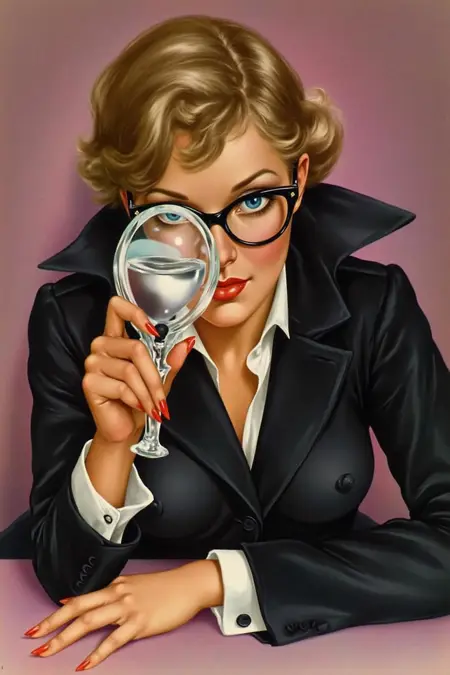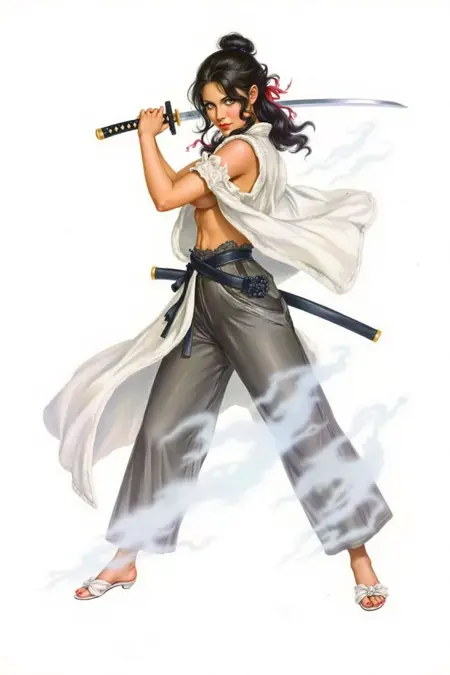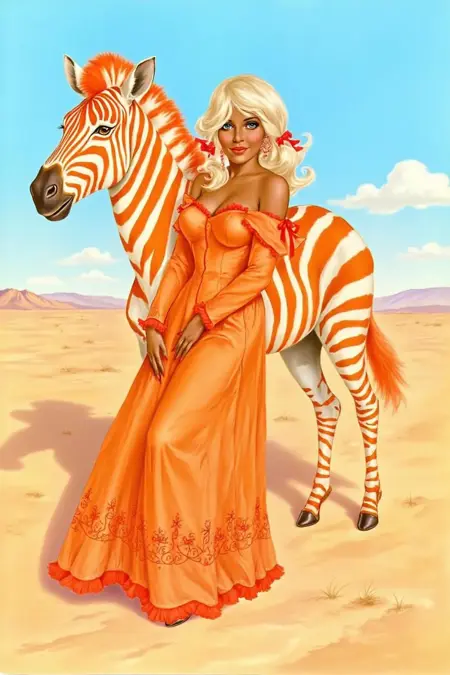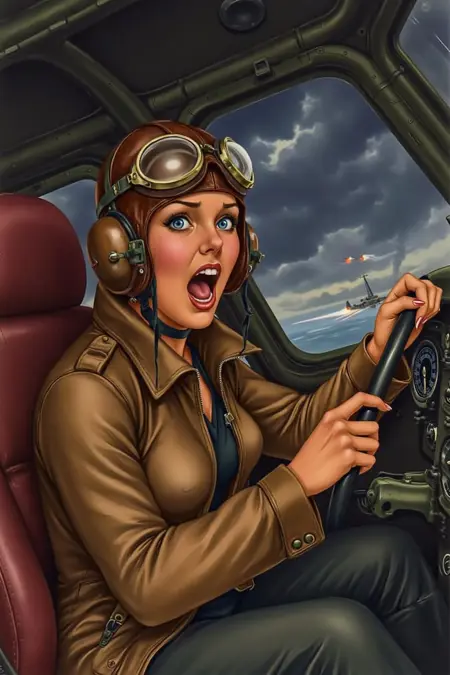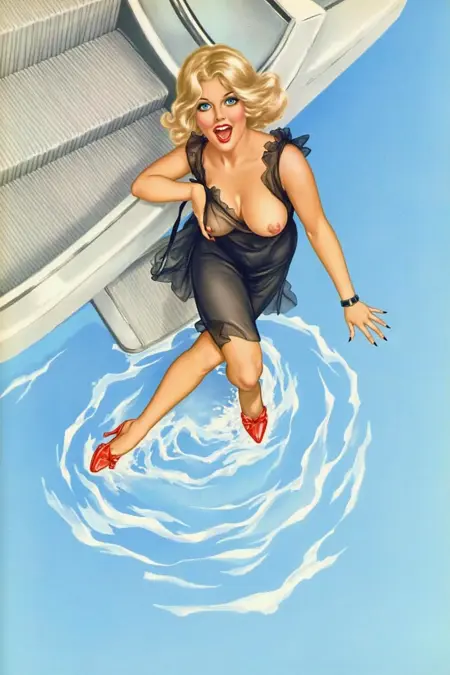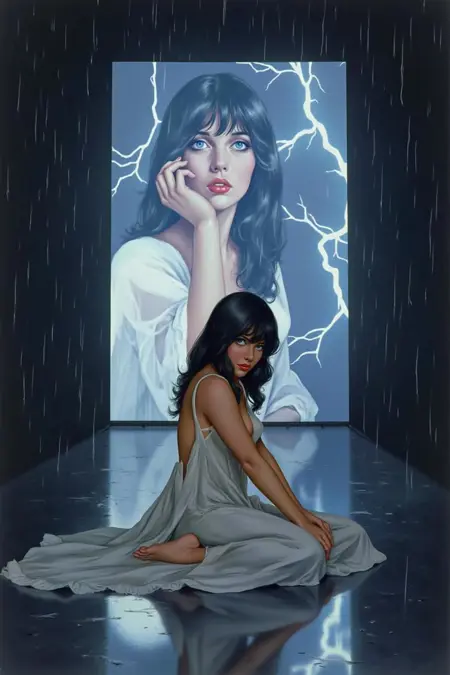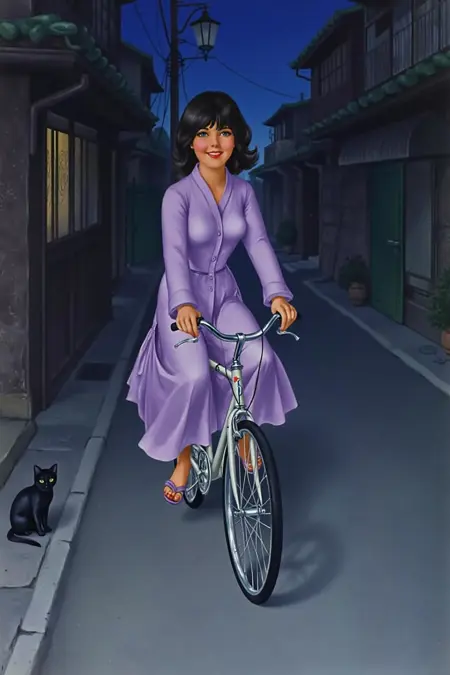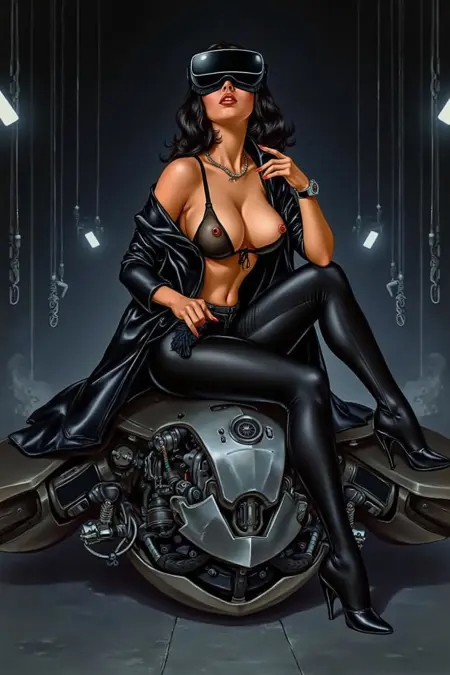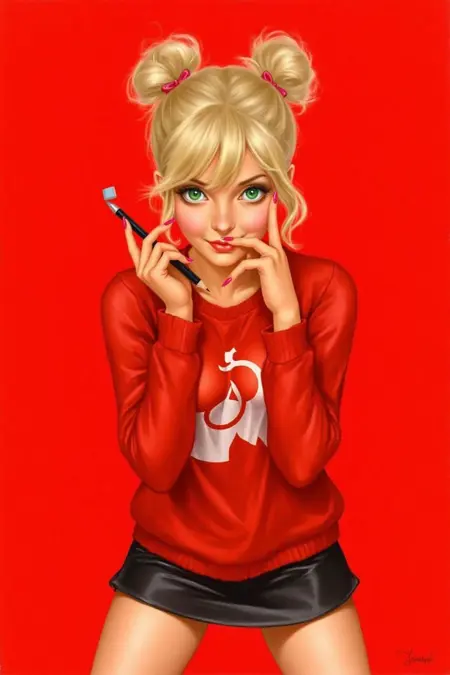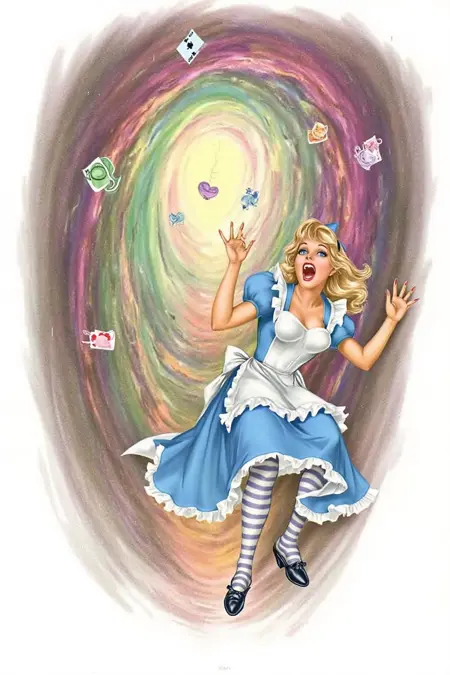Glamour and Elegance: Alberto "Vargas Girls" Pin-up Illustration Style
Details
Download Files
About this version
Model description
Inspired by Alberto Vargas's illustrations. To see his works, please go to https://www.flickr.com/search/?text=alberto+vargas&view_all=1.
Due to the nature of the training set, this LoRA really wants to show nipples and breasts. So please try to describe the cloths the ladies are wearing to tell Flux to put something on them. Even then you'll see nipples popping out here and there 😅.
Vargas works can be divided into two major periods. He became famous in the 1940s as the creator of iconic World War-II era pin-ups for Esquire magazine, known as "Vargas Girls." Between 1940 and 1946 Vargas produced 180 paintings for the magazine. The nose art of many American and Allied World War II aircraft was inspired and adapted from these Esquire pin-ups, as well as those of George Petty, and other artists.
A legal dispute with Esquire over the use of the name "Varga" resulted in a judgment against Vargas. He struggled financially until 1959 when Playboy magazine began to use his works. In this second period of his career, spanning 16 years, he produced 152 paintings for the magazine.
From ChatGPT:
Alberto Vargas (1896–1982) was a Peruvian-American artist best known for his iconic pin-up art, which became widely recognized during the mid-20th century. Vargas’s work epitomized the glamour, allure, and elegance of the era, and his paintings of idealized, often scantily-clad women, known as "Vargas Girls," remain highly influential in both pop culture and the history of illustration.
Biography
Early Life:
Born Joaquín Alberto Vargas y Chávez in Arequipa, Peru, Vargas was exposed to art early through his father, a photographer.
He moved to Europe in 1911 to study art, where he was influenced by European masters and the Art Nouveau movement, particularly the works of Alphonse Mucha.
Move to the United States:
- Vargas emigrated to the U.S. in 1916 and began working in New York as an artist for the Ziegfeld Follies, creating glamorous promotional artwork for the Broadway revue.
Career Highlights
Hollywood Era:
During the 1930s, Vargas worked in Hollywood as a poster artist for major studios such as Universal Pictures and Warner Bros.
He created iconic posters for films, including The Sin of Nora Moran (1933), considered one of the most beautiful movie posters of all time.
The "Vargas Girls":
Vargas became famous for his pin-up illustrations, particularly during World War II. His work appeared in Esquire magazine, where the "Vargas Girls" became a cultural phenomenon.
His pin-ups featured idealized, glamorous women with soft, luminous skin and an air of elegance. Unlike other pin-up artists, Vargas’s work was notable for its refinement and subtle sensuality, blending eroticism with sophistication.
Playboy Magazine:
In the 1950s and 1960s, Vargas began working with Playboy magazine, where he continued to refine his pin-up style. His paintings for Playboy brought him renewed fame, and his illustrations were signed simply as "Vargas."
His work for Playboy further solidified his reputation as one of the greatest pin-up artists of all time.
Artistic Style
Medium:
- Vargas primarily worked with watercolor and airbrush, achieving a soft, delicate texture in his illustrations. His mastery of these techniques gave his paintings a polished, almost photographic quality.
Themes:
His art celebrated the beauty and glamour of women, often portraying them in elegant poses and fashionable outfits, or in playful, suggestive settings.
Vargas’s attention to detail in depicting fabric, hairstyles, and accessories added a luxurious quality to his work.
Influence of Art Nouveau:
- The influence of Alphonse Mucha and Art Nouveau is evident in Vargas’s flowing compositions, ornate details, and emphasis on decorative beauty.
Legacy
Cultural Icon:
Vargas’s pin-up art became synonymous with the image of the "All-American Girl" during the 1940s and 1950s.
His work inspired countless artists and is considered a cornerstone of mid-20th-century commercial art.
Revival and Recognition:
In the 1970s, Vargas experienced a resurgence in popularity, and his original works became highly sought after by collectors.
His illustrations are now displayed in prestigious institutions and galleries, such as the Smithsonian and the National Air and Space Museum.
Enduring Appeal:
- Vargas’s work continues to be celebrated for its technical brilliance, glamour, and ability to capture an idealized vision of beauty. He is regarded as one of the greatest pin-up artists in history, alongside Gil Elvgren and George Petty.
Famous Works
The Vargas Girl Pin-Ups for Esquire magazine (1940s)
Illustrations for Playboy (1950s–60s)
Movie poster for The Sin of Nora Moran (1933)
Personal Life
Vargas married Anna Mae Clift, a model and dancer, in 1930. She was his muse and inspiration throughout much of his career.
Despite his fame, Vargas faced financial difficulties later in life due to legal battles with Esquire over the use of the "Vargas" name.
Alberto Vargas’s legacy lives on as an enduring symbol of glamour, elegance, and artistic excellence, capturing the fantasies and aesthetics of a bygone era with unparalleled finesse.

